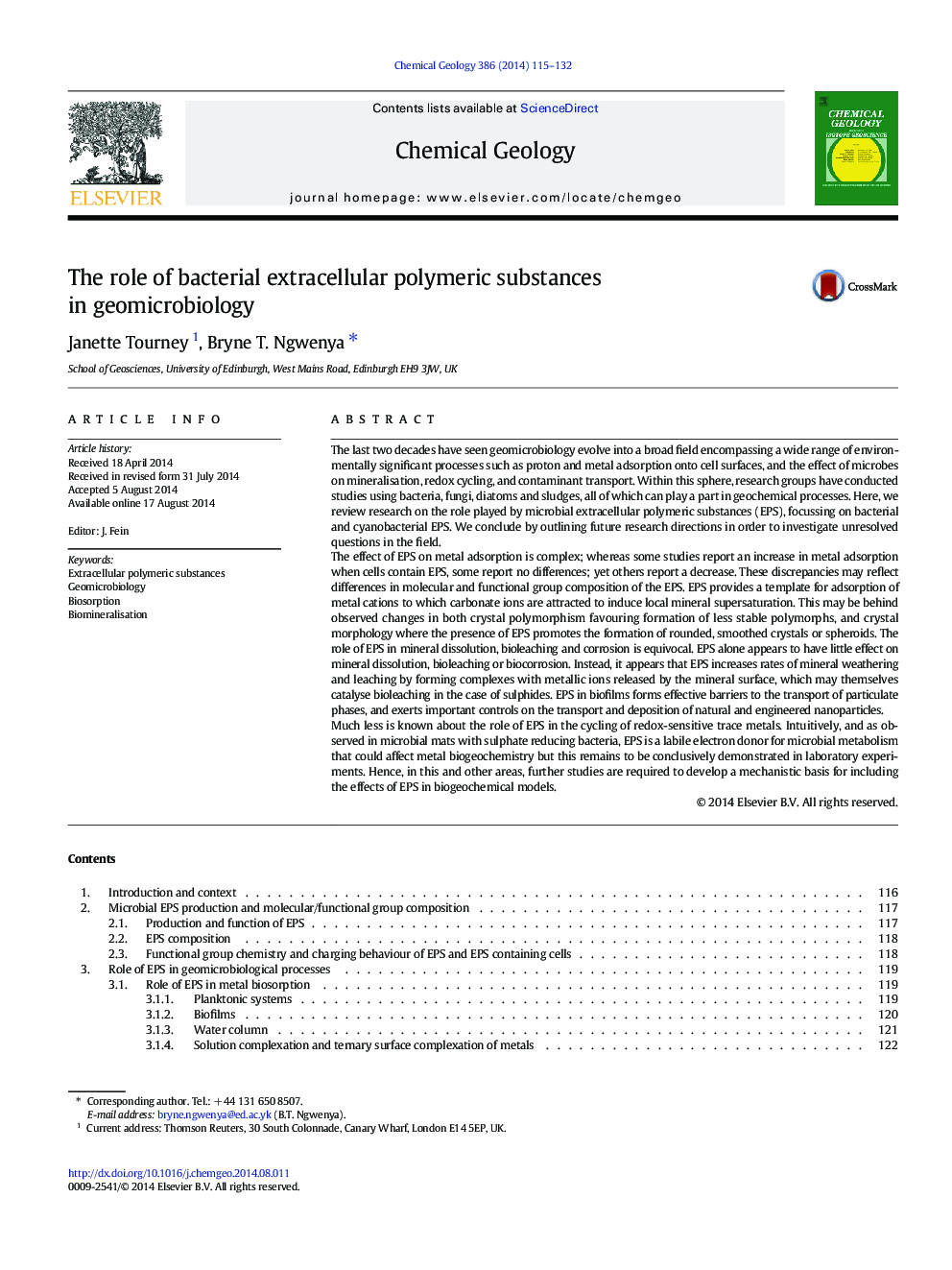| کد مقاله | کد نشریه | سال انتشار | مقاله انگلیسی | نسخه تمام متن |
|---|---|---|---|---|
| 4698650 | 1637586 | 2014 | 18 صفحه PDF | دانلود رایگان |
• EPS can increase or decrease metal adsorption to cells depending on EPS composition.
• Cation adsorption to EPS attracts ligands to the EPS surface and induces mineralisation.
• EPS increases mineral dissolution and bioleaching rates by complexation of cations.
• Role of EPS as electron donor in metal biogeochemistry remains to be demonstrated.
• EPS in biofilms forms barriers to transport of natural and engineered nanoparticles.
The last two decades have seen geomicrobiology evolve into a broad field encompassing a wide range of environmentally significant processes such as proton and metal adsorption onto cell surfaces, and the effect of microbes on mineralisation, redox cycling, and contaminant transport. Within this sphere, research groups have conducted studies using bacteria, fungi, diatoms and sludges, all of which can play a part in geochemical processes. Here, we review research on the role played by microbial extracellular polymeric substances (EPS), focussing on bacterial and cyanobacterial EPS. We conclude by outlining future research directions in order to investigate unresolved questions in the field.The effect of EPS on metal adsorption is complex; whereas some studies report an increase in metal adsorption when cells contain EPS, some report no differences; yet others report a decrease. These discrepancies may reflect differences in molecular and functional group composition of the EPS. EPS provides a template for adsorption of metal cations to which carbonate ions are attracted to induce local mineral supersaturation. This may be behind observed changes in both crystal polymorphism favouring formation of less stable polymorphs, and crystal morphology where the presence of EPS promotes the formation of rounded, smoothed crystals or spheroids. The role of EPS in mineral dissolution, bioleaching and corrosion is equivocal. EPS alone appears to have little effect on mineral dissolution, bioleaching or biocorrosion. Instead, it appears that EPS increases rates of mineral weathering and leaching by forming complexes with metallic ions released by the mineral surface, which may themselves catalyse bioleaching in the case of sulphides. EPS in biofilms forms effective barriers to the transport of particulate phases, and exerts important controls on the transport and deposition of natural and engineered nanoparticles.Much less is known about the role of EPS in the cycling of redox-sensitive trace metals. Intuitively, and as observed in microbial mats with sulphate reducing bacteria, EPS is a labile electron donor for microbial metabolism that could affect metal biogeochemistry but this remains to be conclusively demonstrated in laboratory experiments. Hence, in this and other areas, further studies are required to develop a mechanistic basis for including the effects of EPS in biogeochemical models.
Journal: Chemical Geology - Volume 386, 29 October 2014, Pages 115–132
